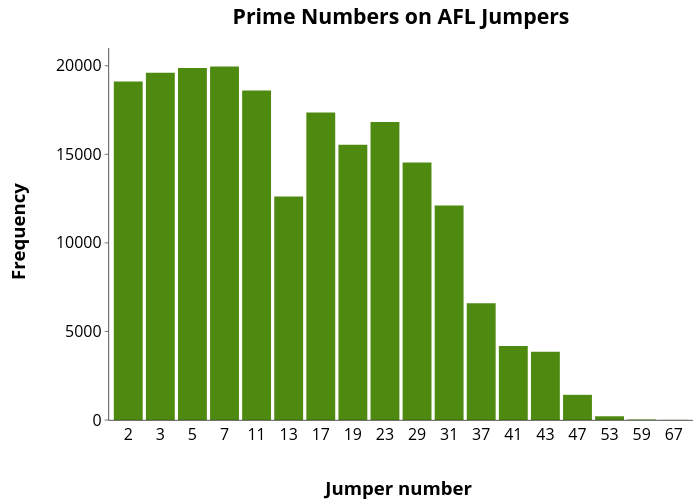Playing in Their Prime
Numbers, that is
Jumper numbers were first introduced to the V/AFL in 1903, although it took until the 1912 season for the league to introduce a mandate requiring players to wear them.
Clubs and players have used different systems and reasonings for the numbers they allocate or allow players to choose.
For example, the captain of Port Adelaide wears number 1, following the tradition set by Clifford Keal when he first captained the club back in 1924.
Or how the Collingwood allocated number 35 to their first draft choice each year to honour Simon Prestigiacomo, who voluntarily withdrew himself from being selected in the 2010 Grand Final when he knew his injuries would not allow him to play to the best of his abilities, until Nick Daicos (son of club legend Peter) asked to continue to wear the number his father wore.
Last year I published a short post about what jumper numbers hadn’t been used before, but this week I wanted to take somewhat of a deeper dive into prime jumper numbers, where a prime is a number that is greater than 1 and has no positive divisors other than 1 and itself.
The interactive graph below shows the number of times each prime jumper number has been worn, from 1912 through to the end of Round 12, 2024.
We can see the lower primes are more common compared to the higher primes, with a sharp drop-off occurring for numbers greater than 31.
I have to admit I’m a little surprised to see the fourth prime, 7, just pipping the three earlier primes for the title of most common prime number worn on an AFL jumper.
It’s less surprising to see the sixth prime, 13, has not been worn as frequently as the other primes around it, given the superstitions that exist around it being an unlucky number.
Interestingly, the eighteenth prime number, 61, has never been worn in an AFL game.
The nineteenth prime number, 67, was worn by eight players in the 2017 Sir Doug Nicholls Indigenous Round in reference to the year of the referendum ensuring Indigenous Australians were included in the census: Daniel Wells, Steven May, Zac Williams, Shaun Burgoyne, Shane Edwards, Lance Franklin, Jeff Garlett, and Josh Hill.
The timeframe of this stat is limited based on what data are freely/easily available and/or accessible. Please don’t hesitate to contact me if you spot any errors in what I have presented.
